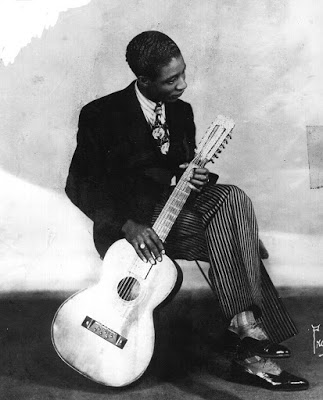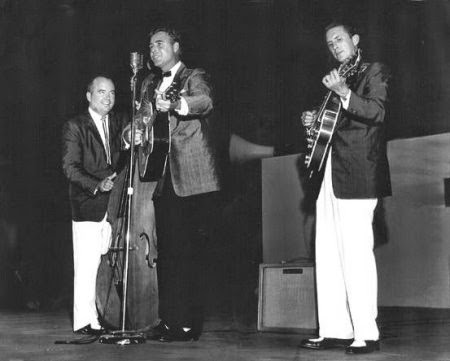Updated 22 June 2016
AMERICA’S Gift has 43 chapters, an Epilogue and 20 pages of Index. See what you’re ordering.
 Before you order America’s Gift,
Before you order America’s Gift,
you’re bound to want to know
exactly what’s inside the 390
pages that make up the book.
You can even preview the first
few America’s Gift chapters, and
check out the book’s index, on this
link here: http://goo.gl/At5AZe
But, if you’ve a moment, scroll down and note the book’s 43 chapters.
Each chapter tells a story and gives you a clue to what’s featured in that
part of the book.
That’s the chapter part explained (I hope). As for the verse, you’ll find the
lyrics of someone who’s, most probably, the first blues singer ever to be
recorded accompanying themselves on guitar. His name was Ed
Andrews, his recording from 1924 and most people, even blues fans,
won’t have heard of him.
There’s more about Ed, of course, in the book and you’ll find his verse
featured after the chapters.
All photographs and illustration here are also featured in America’s Gift.
First, here are the chapters of America’s Gift. The verse is nearer the bottom.
Chapter 1: Remorse for a Bad Life. Page 11
Chapter 2: America’s First Slaves. Page 15
Chapter 3.The First Public Portrayal of Slave Music. Page 25
 |
| America’s first slaves (captured by pirates) arrive in Virginia |
Chapter 4. The Englishman who Sparked the Blues. Page 35
Chapter 5. America’s First Musical Improviser. Page 43
Chapter 6. The World’s First Rock Star. Page 49
Chapter 7. The First Syncopated Pop Song. Page 59
Chapter 8. The First Blues Watershed. Page 65
Chapter 9. The Minstrel Years. Page73
Chapter 10. A Vulgar Melody in a Remote Key. Page 85
Chapter 11. Work Songs, Sea Shanties, and Civil War. Page 91
Chapter 12. The End of Slavery. Page101
Chapter 13. The Insatiable Demand for Coon Songs. Page 105
 |
| The Englishman who sparked the blues in 1822 (See chapter four) |
Chapter 14. Syncopation and Ragged Time. Page 115
Chapter 15. The First Ragtime Song. Page119
Chapter 16. A 19th Century Hint of the Blues to Come. Page 127
Chapter 17. First Guitars and the Earliest Blues Known. Page 133
Chapter 18. The Music that Dare Not Speak its Name. Page 145
Chapter 19. The Second Blues Watershed. Page 149
Chapter 20. Way Down Yonder in New Orleans. Page 153
Chapter 21. The Bluesman Who Taught Charlie Patton. Page 161
Chapter 22. Lead Belly and Early Boogie Guitar. Page 167
Chapter 23. The First Mention of Blues Music in Print. Page 175
Chapter 24. The Father of the Blues. Page 179
Chapter 25. The First Published Blues. Page 189
Chapter 26. The First Published Blues with Lyrics. Page 193
 |
| Al Bernard recorded vocals on St Louis Blues in 1916. It’s hard to believe but an African-American singer wouldn’t record blues vocals in the USA until 1920 |
Chapter 27. The First Recorded blues. Page 201
Chapter 28. The First Recorded Blues with Vocals. Page 205
Chapter 29. The First Black Blues Recordings. Page 209
Chapter 30. Spread Yo’ Stuff. Page 217
Chapter 31. Girl Power. Page 223
Chapter 32. The Blues Divas Discover the Blues Guitar. Page 231
Chapter 33. Here Come the Boys. Page 235
Chapter 34. Revising Current Blues Chronology. Page 247
Chapter 35. The First Improvised Blues Guitar Solos. Page 253
Chapter 36. The Peak Before the Trough. Page 263
Chapter 37. The End of the Classic Blues Era. Page 271
Chapter 38. The Blues Goes Electric. Page 285
Chapter 39. The Original Chicago blues. Page 297
 |
| The great Lonnie Johnson in the 1920s |
Chapter 40. Some Original Chicago Blues Pioneers. Page 307
Chapter 41. The Great Blues Dispute of 1938. Page 319
Chapter 42. The Legacy of Lonnie Johnson. Page 329
Chapter 43. The Teenage Pioneer of Electric Blues. Page 339
Chapter 44. The Blues Goes to War. Page 347
Chapter 45. The Blues Gets Rhythm. Page 353
Chapter 46. The Blues Had a Baby. Page 359
Epilogue. Page 363
Index. Page 369
Now here’s the verse
I hear me knocking, Come running to your door,
I hear me knocking, Come running to your door,
I ain’t a stranger, I’ve been here before,
My mama told me when I was a child,
My mama told me when I was a child,
Running around and women gets you after while,
I got nineteen
women, I believe I wants one more,
Got nineteen women,
I believe I wants one more,
If the one do thrill
me, Gonna let them nineteen go.
Get me whiskey when
I thirsty, Water when I’m dry,
A whiskey thirsty,
Water when I’m dry
I want to swallow ‘em
living, Doggone it when I die.
The verse above is from Barrel House Blues, a track by Ed Andrews recorded in Atlanta, Georgia, in March 1924.
The OKeh advertisement, right, claims blues songs were born in Atlanta, where they found Ed busking on a street corner.
America’s Gift begs to differ. Find out where blues was really born by ordering, or taking a free preview, at:
goo.gl/At5AZe
 Before you order America’s Gift,
Before you order America’s Gift,










